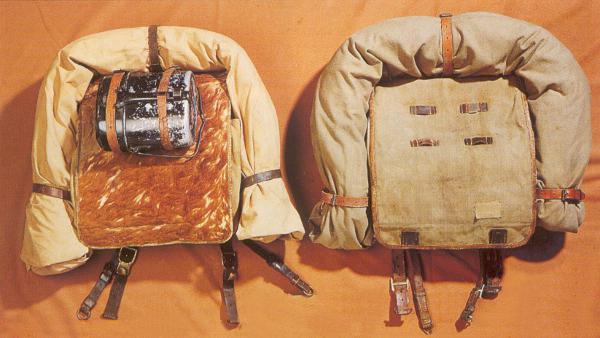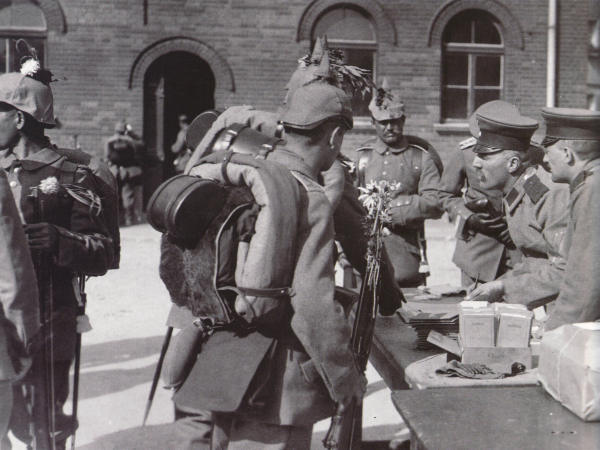Main Menu

M.1895 Tornister
Before the war, the model 1895 Tornister was light brown in color, bordered with tan leather, and the front and back were topped with fur-covered calf-skin or horsehide. During the war, as demand outstripped production ability, construction in all canvas and incorporation of Ersatz materials replaced the hide and leather. The framework was made from wood and was lined with a waterproof canvas. In addition to the main pack body, the backpack flap contained a compartment for storing clothes and two compartments for holding rifle cartridges. In the top of the pack attached a canvas bag containing tent accessories.

Image from Le Fantassin De la Grande Guerre 1914/1918
The Tornister on the left in the photo above is the early pattern with fur-covered calf-skin, the example on the right is the Ersatz canvas pattern.
The backpack was carried using two main leather suspension straps, which were attached with special quick-release bolts at the top of the backpack. These ran over the shoulders and down to the belt and united with the D-rings on the back of the ammo pouches using adjustable hooks. Each leather strap contained a smaller auxiliary strap, fixed on a movable pivot. These smaller straps were adjustable and run under the armpits and looped over hooks on the underside of the main pack body - it is these auxiliary straps that bear most of the weight.
In addition to the adjustments on the auxiliary straps, the main leather straps have two forms of adjustment: the quick-release bolts could be removed and the strap moved upwards and downwards and the hooks on the opposite end could also be adjusted up and down. In addition to the various adjustments, the packs were also delivered in three sizes, having heights of 29.5 cm (11.6"), 31.5 cm (12.4") and 33.5 cm (13.1"). The packs were offered in various sizes and with the above adjustments because regulations prescribed that the backpack should be in close fit with the man's back. However, this had certain disadvantages: during the summer it produces excessive heat while during the winter there was the possibility that - during rests - the back of the backpack became wet and the soldier could get sick.

Photo from The German Army
in the First World War: Uniforms and Equipment, 1914-1918
by Jurgen Kraus for the Bayerisches Armeemuseum.